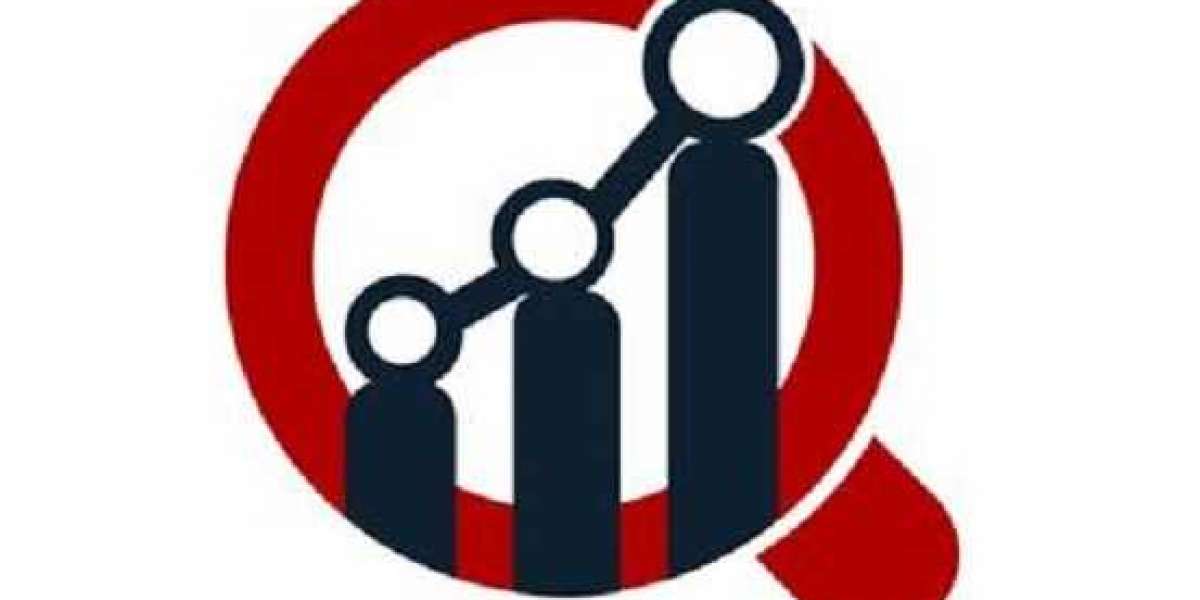The IoT medical device market is experiencing exponential growth, driven by the increasing convergence of healthcare and technology. These connected devices are transforming how medical professionals monitor, diagnose, and treat patients, offering enhanced efficiency, improved patient outcomes, and reduced healthcare costs. This article explores the key facets of the IoT medical device industry, including its market segmentation, driving forces, challenges, and future prospects.
Understanding IoT in Medical Devices
IoT medical devices encompass a wide range of internet-connected instruments, wearables, and systems used for healthcare purposes. These devices collect, transmit, and analyze patient-generated health data in real-time, enabling remote monitoring, timely interventions, and personalized treatment plans. From wearable fitness trackers that monitor vital signs to smart insulin pumps that automate insulin delivery, IoT medical devices are becoming integral to modern healthcare delivery. This interconnected ecosystem allows for seamless data sharing between patients, healthcare providers, and hospital systems, fostering a more proactive and efficient approach to healthcare management.
Key Market Segments
The IoT medical device market can be segmented based on several factors:
- Product Type: This includes wearable medical devices (smartwatches, fitness trackers, continuous glucose monitors), implantable medical devices (pacemakers, insulin pumps, neurostimulators), stationary medical devices (connected hospital beds, remote patient monitoring systems), and ingestible sensors. Wearable medical devices currently hold a significant market share due to increasing health awareness and the proliferation of consumer-friendly devices. However, the implantable medical devices segment is anticipated to witness the fastest growth due to advancements in technology and the rising prevalence of chronic diseases requiring long-term monitoring and treatment.
- Connectivity Technology: The market is divided into Bluetooth, Wi-Fi, cellular (3G, 4G LTE, 5G), and other connectivity technologies like Zigbee and LoRaWAN. Cellular technology held the largest share in 2023 and is expected to maintain its dominance due to its reliability for real-time data transmission and end-to-end security, crucial for remote patient monitoring and telemedicine. However, Wi-Fi is also a significant contributor and is expected to grow substantially.
- Application: Key applications include remote patient monitoring (RPM), telemedicine, mHealth (mobile health), medical imaging, drug delivery systems, wireless emergency response systems, and tele-rehabilitation. Remote patient monitoring is the largest application segment as healthcare providers increasingly adopt IoT solutions to manage chronic diseases, reduce hospital readmissions, and improve patient outcomes outside traditional clinical settings.
- End-User: The primary end-users are hospitals and clinics, home healthcare settings, nursing homes, and ambulatory surgical centers. Hospitals and clinics accounted for the largest market share in 2023, driven by the increasing adoption of connected devices to enhance patient care, improve operational efficiency, and streamline workflows. However, the assisted living facilities segment is expected to expand at the fastest CAGR.
Driving Forces Behind Market Growth
Several factors are fueling the rapid expansion of the IoT medical device market:
- Rising Prevalence of Chronic Diseases: The increasing incidence of chronic conditions like diabetes, cardiovascular diseases, and respiratory disorders necessitates continuous monitoring and remote management, driving the demand for IoT-enabled medical devices.
- Growing Geriatric Population: The aging global population is more susceptible to chronic diseases and requires enhanced healthcare support, including remote monitoring and timely interventions facilitated by IoT medical devices.
- Increasing Demand for Remote Patient Monitoring: Healthcare providers are increasingly adopting RPM solutions to improve patient outcomes, reduce healthcare costs, and enhance patient convenience, particularly for those with mobility issues or residing in remote areas. The COVID-19 pandemic further accelerated the adoption of telemedicine and RPM.
- Advancements in Wireless Technologies: The development and increasing penetration of high-speed and low-power wireless technologies like 5G, Bluetooth Low Energy (BLE), and Wi-Fi are enabling more reliable and efficient connectivity for IoT medical devices.
- Integration of Artificial Intelligence (AI) and Machine Learning (ML): AI and ML algorithms are being integrated with IoT medical devices to analyze the vast amounts of patient-generated data, enabling predictive analytics, personalized treatment recommendations, and early detection of health anomalies.
- Government Initiatives and Supportive Regulations: Governments worldwide are promoting digital health initiatives and implementing regulations that support the adoption of IoT medical devices to improve healthcare accessibility and efficiency.
- Growing Focus on Preventative Healthcare and Wellness: Increasing awareness of self-health management and the availability of user-friendly wearable IoT devices are empowering individuals to proactively monitor their health and well-being.
Challenges Facing the Market
Despite the promising growth, the IoT medical device market faces several challenges:
- Data Security and Privacy Concerns: The collection and transmission of sensitive patient health data through IoT devices raise significant concerns about data security and privacy. Robust security measures and compliance with regulations like HIPAA are crucial to build trust and ensure patient confidentiality.
- Interoperability and Data Integration Issues: Integrating data from various IoT devices and electronic health records (EHRs) remains a challenge due to a lack of standardization and interoperability protocols. Seamless data exchange is essential for a holistic view of patient health.
- High Infrastructure and Device Deployment Costs: The initial investment and ongoing maintenance costs associated with deploying and managing IoT medical device infrastructure can be substantial, particularly for smaller healthcare facilities.
- Regulatory Hurdles and Approval Processes: Medical devices are subject to stringent regulatory requirements and lengthy approval processes, which can slow down the market entry of innovative IoT medical devices.
- Connectivity and Reliability Issues: Ensuring consistent and reliable connectivity for IoT medical devices, especially in remote areas or during network disruptions, is critical for continuous monitoring and timely interventions.
- Usability and Patient Adoption: The ease of use and patient acceptance of IoT medical devices are crucial for their widespread adoption. Devices need to be user-friendly, intuitive, and seamlessly integrate into patients' daily lives.
Future Trends and Opportunities
The IoT medical device market is expected to witness several key trends in the coming years:
- Increased Adoption of Remote Patient Monitoring: RPM will continue to be a major growth driver, with advancements in sensor technology and analytics enabling more sophisticated remote healthcare solutions.
- Rise of AI-Powered IoT Medical Devices: The integration of AI and ML will become more prevalent, leading to smarter devices capable of providing personalized insights and proactive alerts.
- Expansion of Telemedicine and Virtual Care: IoT medical devices will play a crucial role in enabling comprehensive telemedicine and virtual care services, bridging geographical barriers and improving access to healthcare.
- Growing Focus on Cybersecurity: With the increasing number of connected devices, cybersecurity will become a paramount concern, driving the development of more secure IoT medical device solutions.
- Development of Personalized and Precision Medicine: IoT devices will contribute significantly to the advancement of personalized and precision medicine by providing continuous and granular patient-specific data.
- Increasing Use of Wearable and Implantable Sensors: Advancements in sensor technology will lead to the development of more sophisticated and less invasive wearable and implantable devices for continuous health monitoring and therapy delivery.
- Growth in Emerging Markets: Developing economies with increasing healthcare needs and improving technological infrastructure will offer significant growth opportunities for the IoT medical device market.
Regional Insights
North America currently holds the largest share of the global IoT medical device market due to its well-established healthcare infrastructure, high adoption rate of advanced technologies, and strong presence of key market players. However, the Asia Pacific region is anticipated to exhibit the fastest growth rate during the forecast period, driven by increasing healthcare investments, a rising geriatric population, growing awareness of digital health solutions, and favorable government initiatives, particularly in countries like China and India.
Key Market Players
The IoT medical device market is characterized by the presence of numerous global and regional players, including:
- Medtronic plc
- GE Healthcare
- Koninklijke Philips N.V.
- Abbott Laboratories
- Boston Scientific Corporation
- Siemens Healthineers AG
- Johnson Johnson
- Omron Healthcare
- Baxter International Inc.
- Biotronik SE Co. KG
These companies are actively engaged in product development, strategic partnerships, and acquisitions to strengthen their market position and capitalize on the growing opportunities in the IoT medical device market.
Conclusion
The IoT medical device market is revolutionizing healthcare by enabling a more connected, proactive, and personalized approach to patient care.Driven by the increasing prevalence of chronic diseases, the demand for remote monitoring, and technological advancements, this market is poised for substantial growth in the coming years. While challenges related to data security, interoperability, and regulatory compliance need to be addressed, the transformative potential of IoT medical devices to improve healthcare outcomes and enhance the quality of life is undeniable. As technology continues to evolve, IoT medical devices will play an increasingly critical role in shaping the future of healthcare.







